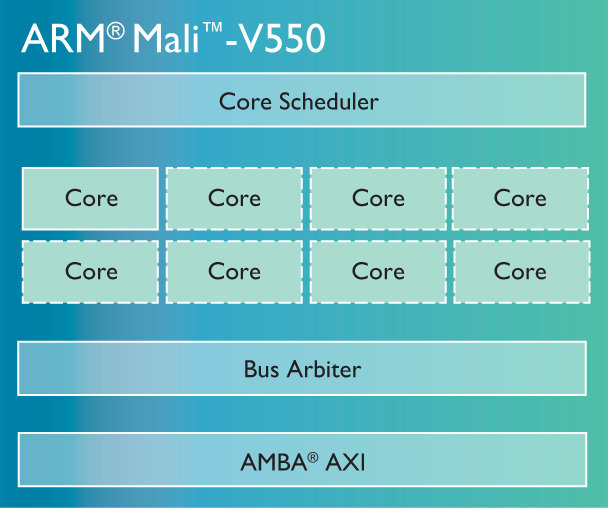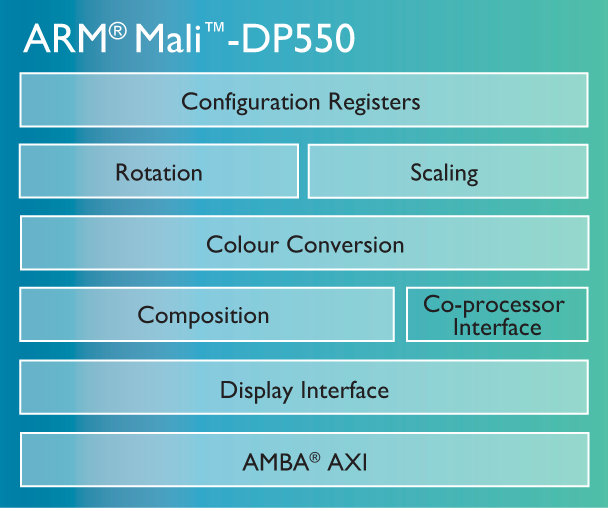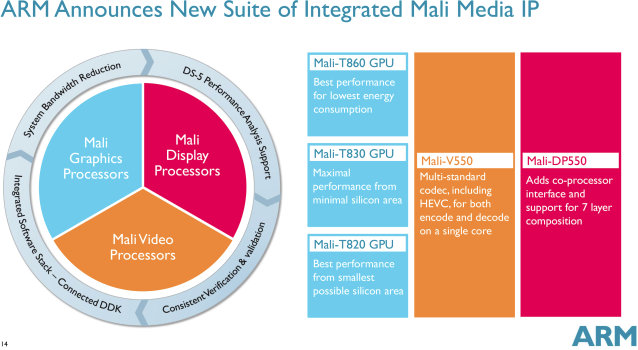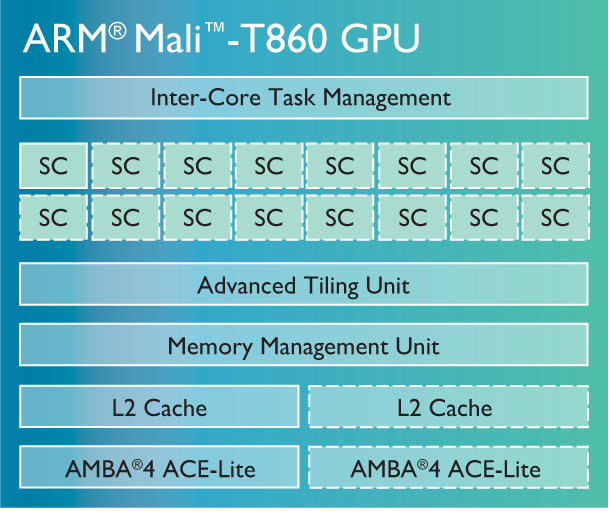ARM has just announced several new Mali media IP: three Mali-T800 series GPUs (Mali-T820, Mali-T830, and Mali-T830) based on Midgard architecture, as well as Mali-V500 video accelerator, and the Mali-DP550 display processor.
Mali T800 Series GPU
The new Mali T-8xx GPUs are based on the same Midgard architecture used in Mali T-6xx and T-7xx GPUs, but deliver better power efficiency thanks to technologies such as ARM Frame Buffer Compression (AFBC), and Adaptive Scalable Texture Compression (ASTC) for imput bandwidth reduction, as well as Transaction Elimination and Smart Composition.
ARM provided some performance and energy-comparison between T800 and T600 series (but strangely nothing against T700):
- The Mali-T820 GPU is optimized for entry-level products, achieving up to 40 percent more performance density compared to the Mali-T622 GPU.
- The Mali-T830 GPU delivers up to 55 percent more performance than the Mali-T622 GPU.
- The Mali-T860 GPU provides higher performance and 45 percent more energy-efficiency compared to the Mali-T628 GPU.
Mali-T860 supports up to 16 shader cores whereas Mali-T820 and Mali T-830 are limited to 4 shader cores. Supported APIs include OpenGL ES 3.1/3.0/2.0/1.1, DirectX 11, OpenCL 1.2/1.1, and RenderScript. Mali-T860 also provides 10-bit YUV input and output at full speed, which could be especially useful for 4K video using HEVC codec.
More details can be found on Mali-T860, Mali-T830 and Mali-T820 product pages.
Mali-V550 Video Processing Unit
Mali-V550 video processor fully supports the HEVC standard, and the single core version can decode/encode 1080p60 HEVC video, whereas the eight core version can handle 4K @ 120 Hz HEVC decoding/encoding.

Mali-V550 also benefits from new features such as Motion Search Elimination technology that reduces bandwidth by up to 35 percent, and will improve Wi-Fi Display/Miracast user experience. Up to 50% bandwidth reduction can also be achieve with AFBC. It also supports 10-bit YUV, so 10-bit HEVC/H.265 video be supported combined with Mali-T800 GPU, with the VPU “feeding” 10-bit decoded data to the GPU. Other video codecs include the usual suspects, namely H.264, MPEG4, MPEG2, VP8, VC1, Real Media, H.263, MPEG-4 and JPEG. VP9 support is not mentioned. Driver and video streaming infrastructure is based on OpenMAX.
Visit Mali-V550 product page for more information.
Mali-DP550 Display Processor
Mali-DP550 display process will handle composition, scaling, rotation and image post-processing from the GPU in a single pass, and it also support Motion Search Elimination, and AFBC to reduce bandwidth use in order to maximize battery life. Up to seven layers of composition, up to 4K resolution, are supported, a co-processor interface enabled easy integration with third party IP blocks.
 Single and dual display output are supported, as well as various YUV/RGB pixel formats, including 10-bit YUV. More details can be found on ARM’s Mali-DP550 page.
Single and dual display output are supported, as well as various YUV/RGB pixel formats, including 10-bit YUV. More details can be found on ARM’s Mali-DP550 page.
All three new ARM Mali media IPs are available for immediate licensing, and consumer devices are expected in late 2015 and early 2016.
Via Anandtech.

Jean-Luc started CNX Software in 2010 as a part-time endeavor, before quitting his job as a software engineering manager, and starting to write daily news, and reviews full time later in 2011.
Support CNX Software! Donate via cryptocurrencies, become a Patron on Patreon, or purchase goods on Amazon or Aliexpress






